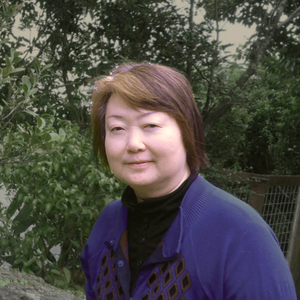2024.04.25
コラム/エッセイ伝統文化と私 (外舘和子)
一般社団法人日本伝統文化検定協会副会長
外舘和子(とだて・かずこ)

このたび、一般社団法人 日本伝統文化検定協会 副会長に就任した外舘和子と申します。普段は多摩美術大学で工芸論や日本美術史を教えています。今後、時々この欄で皆さんに工芸や伝統文化の魅力、現況を伝えていきたいと思います。
この20年余り、海外の美術館や大学で展覧会の監修や図録執筆、講演、あるいは工芸や陶芸の国際公募展の審査に赴く中で、とりわけ日本の工芸や伝統文化が大いに注目されていることを感じています。
ごく最近の例では、アメリカ、ミシガン州立大学美術館の企画展「Clay as Soft Power(ソフト・パワーとしての土)」の図録に論文を書きました。この展覧会は戦後から今日に至る日米の陶芸家の交流を中心に紹介したもので、特に信楽や備前などの日本の焼締陶にアメリカ人陶芸家がいかに影響を受けたかを示す内容でした。日本では古墳時代に「穴窯」が登場しましたが、電気やガスの窯が普及した今日でも、そうした薪の窯を使用している陶芸家がいます。電気の窯より温度のコントロールが難しく、焼成時の季節や天候によっても焼き上がった雰囲気は微妙に異なります。けれどもそうした自然や、完全には意のままにならない相手と向き合い、折り合いをつけながら最善のものを生み出すという日本人の姿勢は、来日したアメリカ人の共感を得ました。
また、焼締陶の素朴な土味に侘(わび)や寂といった趣を見いだし、時に割れや歪みの美しささえ楽しむ日本人の美意識は、茶道文化とも関係しながら、海外の陶芸家たちに大きな影響を与えています。アメリカ現代陶芸を代表するピーター・ヴォーコスは、戦後、アメリカの抽象絵画だけでなく、そうした日本の焼締陶に影響を受けたと語っています。
最先端技術を受け入れながらも、古い手法の良さも捨てず、やきものの原点を忘れない姿勢は、ともすれば効率第一になりがちな人類の営みを考える上で外国人にも示唆するところが大きいでしょう。日本の工芸や伝統文化には、そうした日本人の価値観や美意識、生きる術のエッセンスが凝縮されているのです。
多摩美術大学教授、工芸評論家、工芸史家
カテゴリー: コラム/エッセイ





